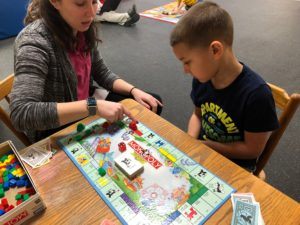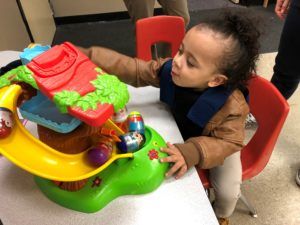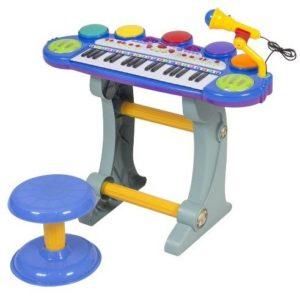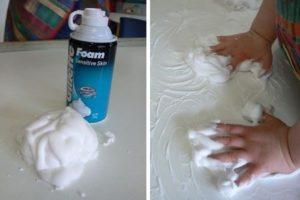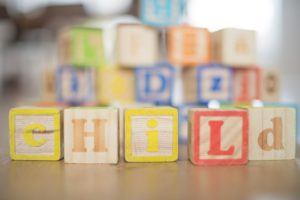Month: November 2017
Games encourage so many skills. Socially games can encourage turn taking, patience to wait your turn, understanding of directions and so much more.
The below games are just a few examples of games that can improve visual motor skills, hand eye coordination, and balance.
Matching pictures, turn taking and memory skills are encouraged in the Memory and Go Fish game.
Elefun challenges visual motor skills, reaction time skills, following directions and color matching.
Connect Four requires the ability to have vertical special awareness to see 4 chips in a row horizontally, diagonally or vertically. You have to have an offensive strategy for you to win and a defensive strategy to prevent you opponent from winning before you do. These are great problem solving skills to teach your child and a game you can play for many years.
Hullabaloo teaches the ability to follow directions, coordination skills, color and animal recognition, motor planning, turn taking, listening and social skills. It is a great game for younger children.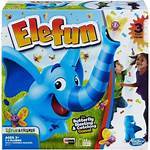
Twister encourages the ability to follow directions, balance, strength, coordination, identifying right and left side, color recognition, turn taking and social skills.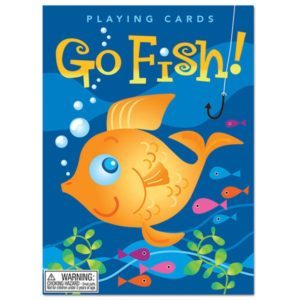
Whac-A-Mole challenges visual motor skills and reaction time skills.
Zoom Ball is a fun game that is challenging for arm and shoulder strength and motor planning. Tie the rope shorter to make this game easier.
Jenga Boom will have all laughing as you challenge fine motor, motor planning, decision making and reaction time skills for all ages.
An IPad is great for games, communication apps, movies, family photos and endless other options.
I hope you find these game ideas helpful to make gift giving easier for you this year. ABC Pediatric Therapy Network just wants to help.
Try out our Interactive Screening Tool to know how to further help your child at checklist.abcpediatrictherapy.com.
https://www.abcpediatrictherapy.com will have information to answer many questions you might have.

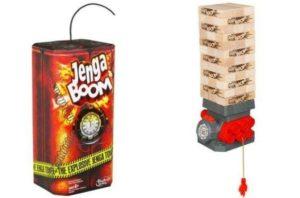
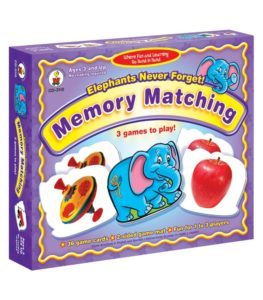
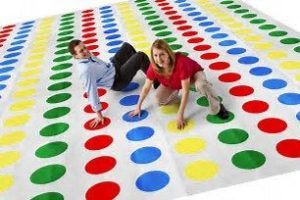
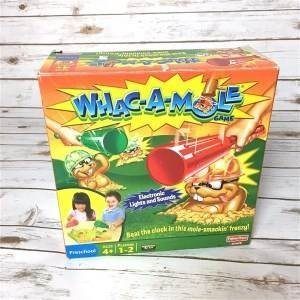
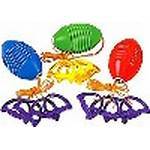
There are toys that last across the ages. No age defines these toys but they are loved by the young and the old.
I bet every child had a slinky. Some were metal, some were plastic. Some were big and some were small. All were fun! Figuring out how to get a slinky to slink all the way down the stairs took higher level problem solving. Using 2 hands to make a slinky go up and down was easier but still a coordination challenge.
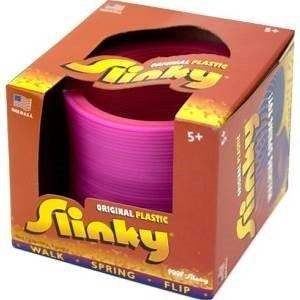
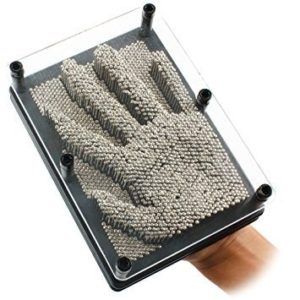
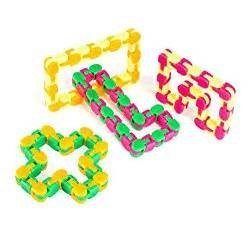
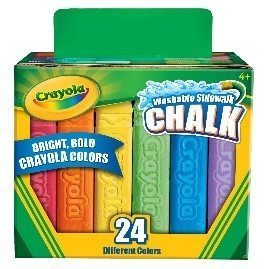
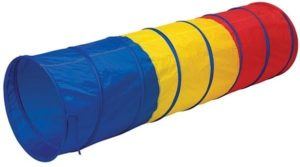
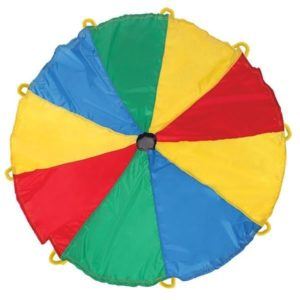
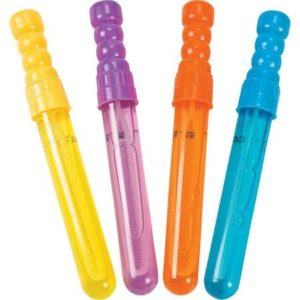
Sidewalk chalk is unlimited in your ability to be creative. You can draw stick figures – be sure to add as many body parts as you can. You can draw hopscotch – challenge your 1 foot standing skills and make more squares that require 1 foot. Draw a 4 square court and challenge your ball skills!
A parachute is a great social skill game. Use direction words – go up and now down! If you have enough people, call out a name and have that person go under the parachute. This is a great sensory experience. Close the parachute around the person then raise it back up and call another name. Challenge everyone to walk right then stop and go left. Put balls on the parachute to encourage reaction time skills – don’t let those balls pop off!
A canvas tunnel – great for crawling when young and as part of an obstacle when a bit older.
Bubbles! Who doesn’t love bubbles!? Bubbles encourage breath control in order to blow a bubble. Then you need eye hand coordination and reaction time skills in order to catch each bubble. Wait! Hold a bubble down by your child’s foot and ask then to gently pop the bubble to encourage 1 foot standing. Then hold the bubble up high to encourage tiptoes. What fun you can have with bubbles!
Fidgets are fun for everyone!
Pin art where hundreds of pins take on the shape of your hand or your foot or your face. What a great sensory experience!
Try these toys with your child and have fun together.
Be sure to know what skills and toys to have for each age level by answering this checklist based on your child’s age – checklist.abcpediatrictherapy.com.
Visit https://www.abcpediatrictherapy.com for more information about child development.
ABC wants to help you “create the best life for all children”.
Read More
Music is a great way to enhance child development. Research has proven that children who play a musical instrument do better in math. However, for the point of this blog, I am introducing music as a developmentally sensory experience.
Musical instruments teach cause and effect, fine motor coordination, breath strength and control to name a few skills.
A drum set encourages more of a gross motor arm and hand movement. A whistle or flute encourages fine motor finger movement.
Whistles are a fantastic way to gain lip strength, diaphragm strength and the ability to control how long you can push out a breath. Why are these things important? Lip strength will help a child to control thin liquids into and out of their mouth. Diaphragm strength and the ability to push out air improves a child’s ability to speak loudly or say a full sentence without needing a breath. The ability to suck a thick milkshake through a straw is influenced by lip and diaphragm strength.
The below microphone that echoes sound back encourages a child to continue to produce sounds of different length. Maybe you could take turns with your child challenging him/her to produce different sounds.
Bell chimes and tambourines are easy cause effect instruments.
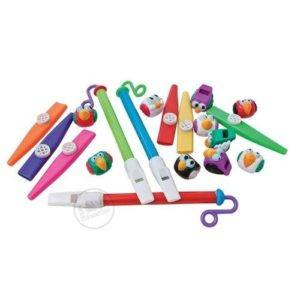
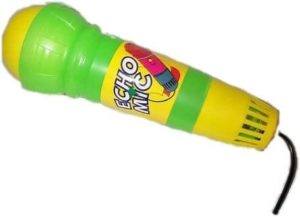
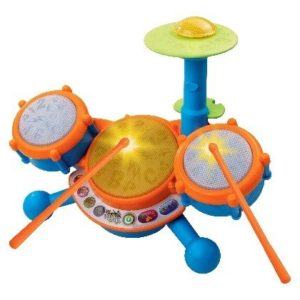
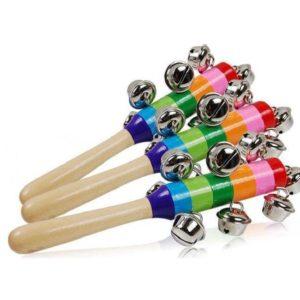
Overall, music is just fun for everyone and for all ages!
Music is something children can do alone or with friends.
If you would like more information on your child’s development, please go to checklist.abcpediatrictherapy.com and visit our website at https://www.abcpediatrictherapy.com.
At ABC, we want to help every child succeed!
Read MoreMost children love to seek out sensory feedback from their environment. For those that do not, we want to challenge them to experiment with sensory activities to the extent that sensory information will not be a barrier for them in life.
Some children have trouble focusing in school due to distracting sensory information – doors closing, chairs scraping along the floor, fluorescent lights bussing.
Or maybe it is the challenge of eating barbeque wings or corn on the cob with butter due to the inability to tolerate messy hands.
Are loud sounds so obnoxious that a parade or the circus is not a fun family event?
Consider the below sensory toys to give your child experiences such that they can work through and development a tolerance for sensory stimuli.
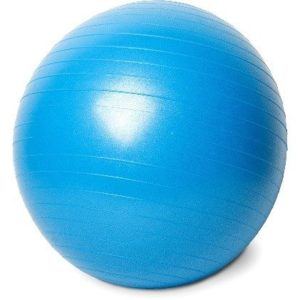
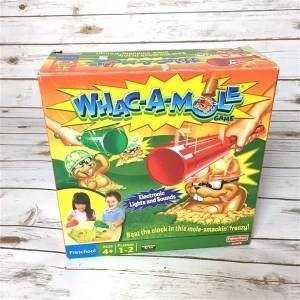
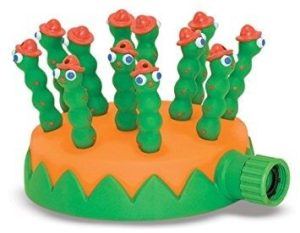
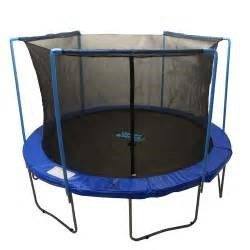
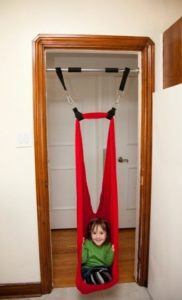
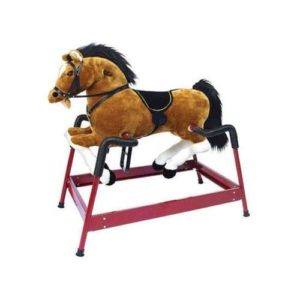
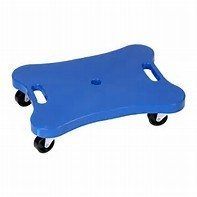
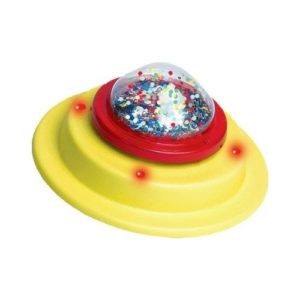
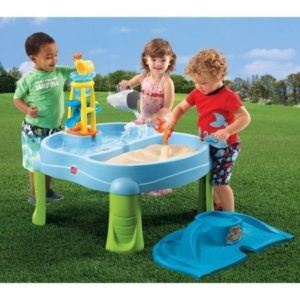
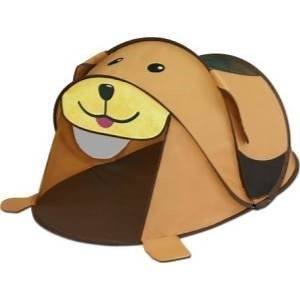
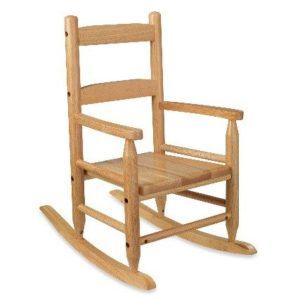
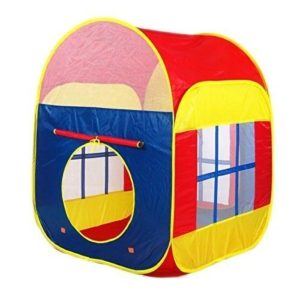
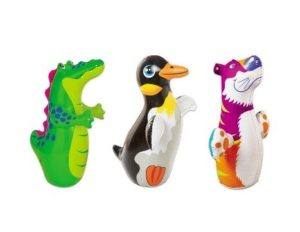
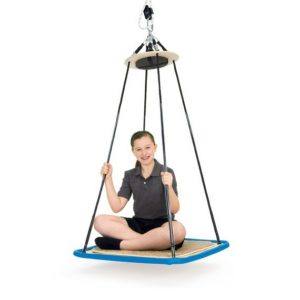

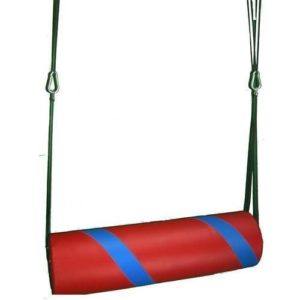
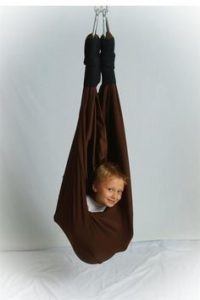
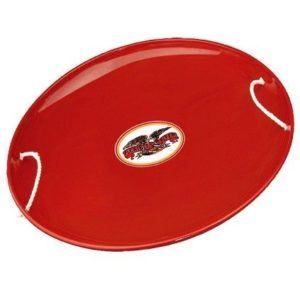
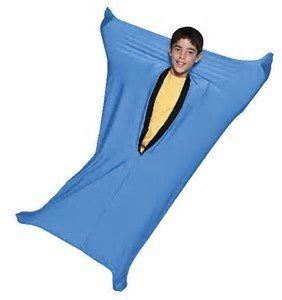
Spinning, rocking, swinging, vibration, bouncing, textures like sand, water and shaving cream, womb space like a tent or play house or body sox are all great sensory experiences for your child. Each experience is new and teaches the brain concepts needed to successfully confront the world.
Temperature, texture, sound, taste, brightness or darkness and movement are all examples of sensory experiences that your child needs to experience to grow and learn to accept these challenges as part of their environment. Having a mature sensory system will increase your child’s confidence as they will not fear any sensory stimuli.
Challenge your child (and maybe yourself) to be sure that all sensory experiences can be seen as fun or at least tolerable. This increases social opportunities for your child. For example, a child who does not like vibration may not learn to ride a bike. When his/her friends have mastered bike riding, the friends will take off on bikes leaving your child behind to come inside to play. You can work with your child to tolerate vibration and having feet off the ground as they grow in order to master later skills like bike riding.
Remember developmental skills build on each other. Keep exposing your child to new experiences so you can help mature their sensory systems.
For more information, go to our website https://www.abcpediatrictherapy.com and check out our Interactive Developmental Screening Tool at checklist.abcpediatrictherapy.com.
Let’s us know if we can help!
Read More
After about the age of 5, buying toys for children with special needs can get challenging. We want to help! As a physical therapist and the CEO of ABC, I am super passionate about children in general. I want each to succeed and toys help them to do that.
I have an 11 year old niece who has Angelman’s Syndrome. Each year my sister is so challenged to come up with gifts that will push my niece’s potential. Amazingly, my sister accomplishes this daunting task each year. I hope your challenge is made easier by sharing these ideas.
Now, I want to qualify, I am THAT aunt that, as a physical therapist, I do not want my niece playing with toys too young for her age. I try to balance her developmental level with her chronological age. This can be a challenge.
Pretend Play ideas
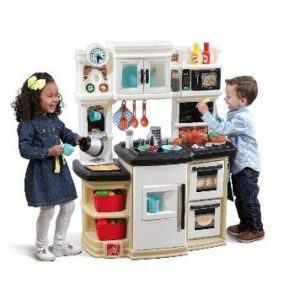

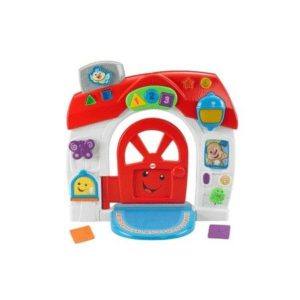
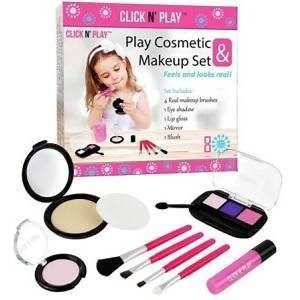
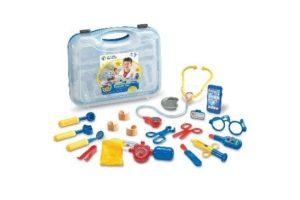
These are great play ideas for 10 months – 6 years old.
Children can crawl through, pull to stand, cruise and tiptoe.
They can use their imaginations and pretend to be a parent or cook a meal. Social interaction with a friend and sharing are also skills these toys will encourage.
Many language concepts like word development and direction words such as in, out, up and down can be challenged.
Cause and effect will also be developed playing with these toys.
Remember your child will see you or a sibling doing many activities in real life that they may or may not ever be able to do. It is fun for them to pretend at those activities. Have these toys available for your child to develop these real life skills. Encourage your child and show them how to use the toys. Take turns. Play side by side. Interact together.
I hope you found these ideas helpful! Look for our next blog as I continue to share more toys ideas!
Check out our developmental checklist at checklist.abcpediatrictherapy.com to know what to encourage at what age for your child.
Visit https://www.abcpediatrictherapy.com for more information on child development.
Read More
 Skip to content
Skip to content
